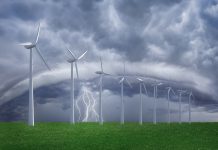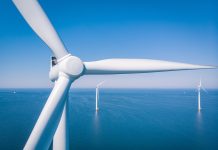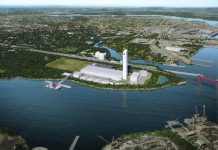Offshore wind is taking a firm hold in Europe, and in the U.S., it’s dawning as the next big thing in wind energy. But for all the talk about offshore wind, it’s mostly fixed wind turbines that are getting most of the attention.
The minds behind Cerulean Winds, however, said that fixed turbines only scratch the surface of offshore wind’s potential, and floating offshore wind turbines are the true wave of the future, offering massive potential.
“Floating wind is the last mover advantage in the wind industry, because the opportunity for floating wind is far, far bigger and has far more potential, and actually, in some respects, it’s far better because it’s further offshore,” said Dan Jackson, co-founder of Cerulean Winds. “The winds are stronger, and you’re not interfering with many of the near-shore issues associated with fishing and leisure use and birds and the environment. Our projects are hundreds of miles offshore, and that presents a far better solution in every regard.”
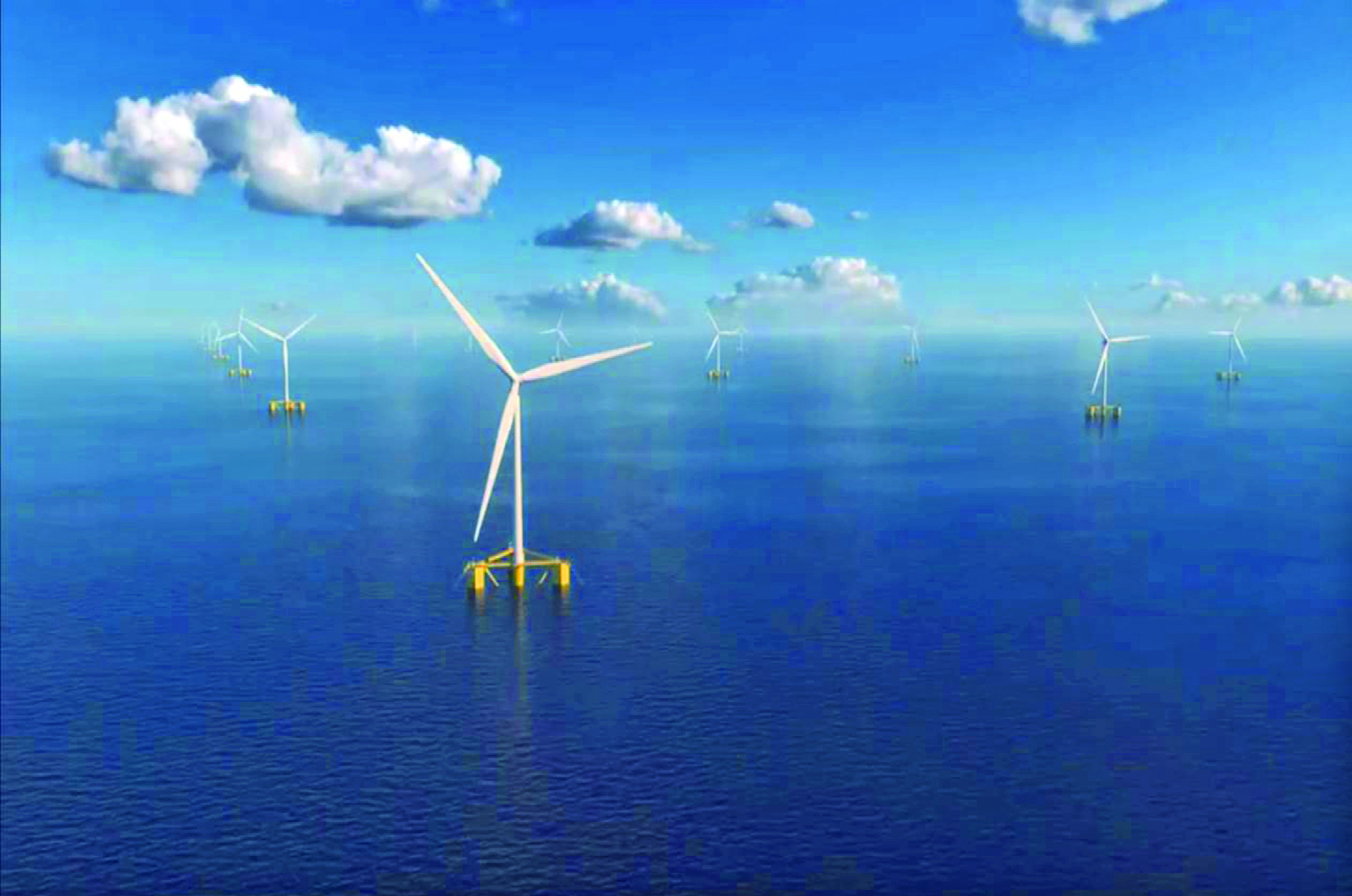
Oil and gas background
In working with getting turbines spinning offshore, Cerulean Winds brings a background of oil and gas expertise, as well as integrated contracting, according to Jackson.
“The vast majority of offshore wind projects, not floating, but offshore fixed wind — which is what it’s been today — still have a fairly piecemeal approach to contracting where the owners take the majority of the risk,” he said. “Our construct is bringing in Tier One contractors as part of the integral part of the proposition. They’re investors in the scheme. And they work as an integrated contract. The integrated contracting is very much part of the proposition in financing from the infrastructure markets. These are part of the proposition. And deep-water oil-and-gas expertise in floating structures and mooring systems is crucial for the success of floating wind.”
Cerulean Wind’s expertise with oil and gas is what led to its current involvement with floating wind as it reaches a technical maturity, according to Jackson.
“The endeavors of others in the various pilot programs have been very successful,” he said. “The motions of floating foundations have very little impact on the turbines and the performance of the turbines. And they also, more importantly, demonstrate that, even in harsh offshore environments such as the north of Scotland, where some of the pilot programs have been, the motions of these space frame structures are very consistent with the understanding from oil and gas and actually pretty benign.”
Cerulean’s proposal is for three sites, two in the Central North Sea and the other West of Shetland, among the most hostile environments in the world.
“The right sort of floating structure with the right mooring systems is 100 percent reliable in that environment,” Jackson said. “There are oil-and-gas installations in the same location that back that up.”
Driving force of floating wind
The need for floating wind becomes clearer with a quick look at coastlines around the globe where they drift off pretty quickly into deep water, according to Jackson.
“Deep water in the wind space is probably 50 meters, but most places don’t have long shallow water shafts,” he said. “In the U.S., I think we see a number of things. What we’re doing in the U.K., we’re concentrating on one particular effort, which is decarbonization of the oil and gas facilities. We are looking at the same in the U.S., as an opportunity, and we certainly see the same enthusiasm by the oil and gas companies to decarbonize their industrial facilities, both onshore and offshore. It’s not just the big platforms offshore, but it’s also where the oil and gas comes to shore — some pretty dirty industrial real estate.”
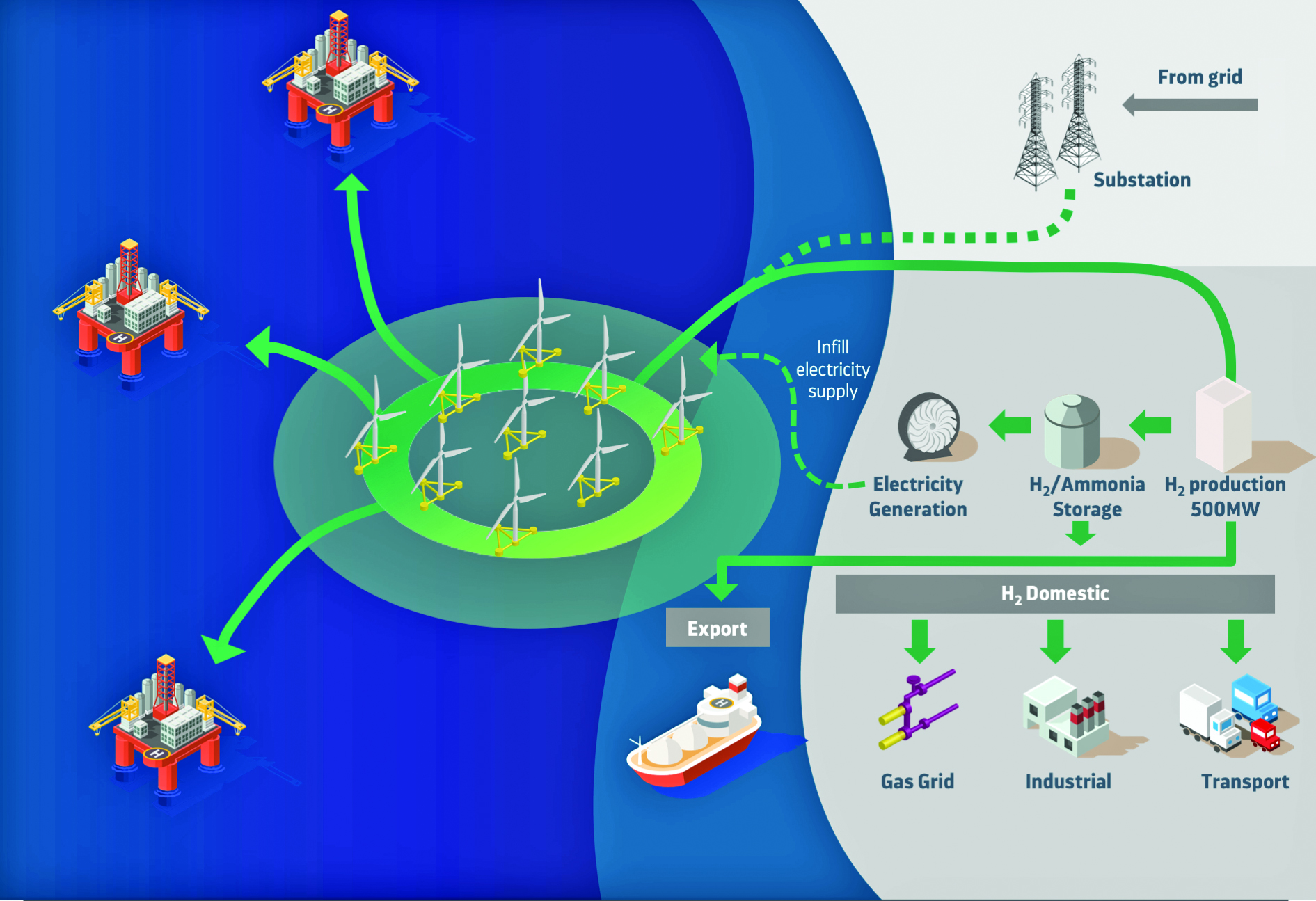
That can all be cleaned up with green-power generation at a large commercial scale, according to Jackson.
“We are looking at the U.S., and we see the entry points being the decarbonization of existing industrial facilities that are important for everybody — particularly the climate lobby — to decarbonize the real mess that’s out there as well as obviously provide green energy to the grid and to power people’s homes and onshore industrial plants,” he said. “There are some easy wins, and the easy wins are to decarbonize bad polluters in industrial end users.”
Major project in the works
Turning offshore wind on a commercial scale into reality is Cerulean Wind’s main objective, and, to best illustrate that point, Jackson said a Cerulean project includes three 1-GW wind farms connected together to provide green energy to large industrial facilities. Those facilities include offshore oil and gas platforms and onshore industrial users that would use the extra green energy produced to provide green hydrogen.
“We have, in the U.K. scheme, proposed three green hydrogen plants, each of which are 500-MW nameplate capacity,” he said. “Within Europe, those plants are not the largest by far; there are quite a number of green hydrogen plants in process under contract in that bracket. The floating wind farms we’re proposing are three 1-GW plants. The fields are the largest in the market, and they need to be of that scale to have an impact on the upstream oil and gas facilities to cut the emissions. That would cut 10 million tons of carbon dioxide emissions a year from the oil and gas facilities on the U.K. continental shelf and produce large amounts of green hydrogen in the U.K.”
The green hydrogen economy is an important focus of the U.K.’s directive, according to Jackson. There are a lot of similarities between what the European countries are doing. The U.K. is probably marginally ahead of others, but what the U.K. is proposing is being looked at by Germany and Denmark as well as by Japan and the U.S.
“There’s a real political shift now that floating wind, in particular, is commercially viable,” said Jackson. “It’s very comparable to large-scale fixed wind offshore in terms of price per megawatts. And that opens up all sorts of opportunities to go from floating wind to green hydrogen as a private system.”
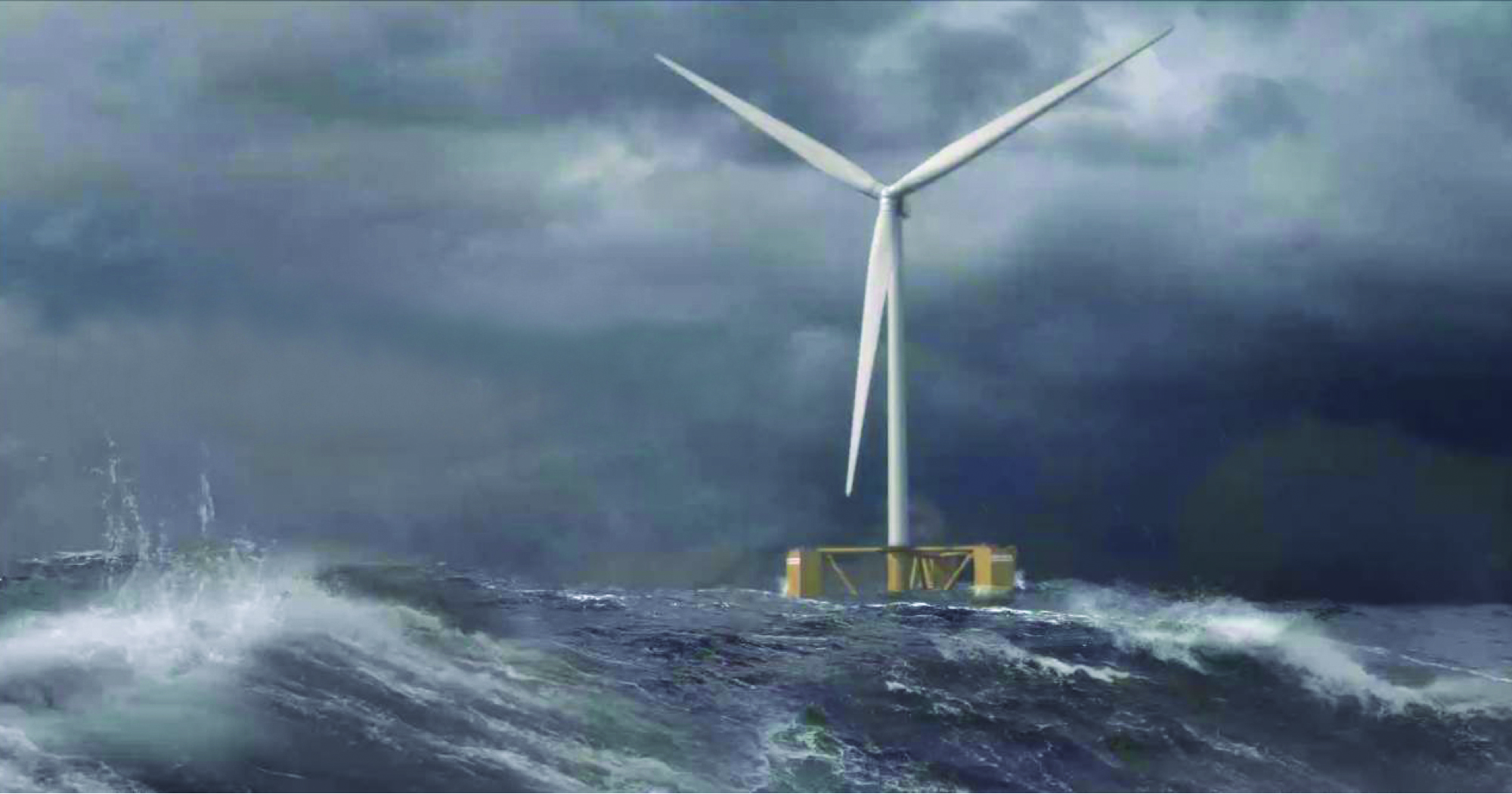
Continually pushing net-zero future
By pushing these directives not just in the U.K., but worldwide, Cerulean Winds’ goal is to move power generation globally from fossil fuels to renewable energies, according to Jackson.
“And it can happen at scale in a very short period of time,” he said. “By the end of the decade, we should see the majority of the power being generated in the developed world using renewable energies. It can happen that quickly. It’s a shift. It’s a shift that needs to happen. And I think public sentiment has now been understood by the political leaders, and political sentiments are driving through the regulation, opening up the processes for developers, such as Cerulean, to bring in large-scale infrastructure schemes.”
“We are creating an offshore transmission system,” he said. “And that offshore transmission system consists of both offshore power generation and, secondly, the movement of power through an offshore transmission network. There are many analogies, for example, in the U.S. Gulf where there is a fantastic gas transmission system and a fantastic oil transmission system. And the next stage is actually complementing these with a power transmission system where ultimately the renewable power generation will replace fossil fuel extraction.”
Infrastructure player
Cerulean Winds tackles these challenges as an infrastructure player, according to Jackson.
“We aligned ourselves with certain partners, and so, there are two sets of partners that are very important,” he said. “We have a set of Tier One contractors that can deliver the infrastructure. We’ve declared, for example, NOV, which is a U.S. contractor for the floating units, in our view the best marine contractor in the floating wind market. And we’ve locked in the other Tier One contractors to deliver the schemes that we’re proposing. The U.K. scheme I’m referring to is in excess of 10 billion pounds. It’s a proper mid-scale infrastructure play.”
The second piece is the financing, according to Jackson.
“It was very important before we went to the regulators or started proposing schemes, that we could demonstrate that we had confidence to deliver the funding from the infrastructure markets for the proposition,” he said. “It’s an infrastructure play, where the infrastructure will be installed, and the end users, the oil and gas facilities, the industrial users, or the hydrogen plants will just be charged the tariff for the electricity. The same as what you pay at home — just pay for what you use. And the infrastructure is paid for by the financial markets.”
A hydrogen industrial economy
There has been a lot of talk about heavy industries in Europe such as the steel industry, moving to a hydrogen economy, according to Jackson. Those industries need gas to get the temperatures from all their processes, but they are looking for ways to do it in a green way. Green hydrogen is a solution to keep those industries going, but it does it in a way that is acceptable to the current world view.
“There’s an overwhelming demand for green energy,” he said. “But there’s also a serious bottleneck with the grid system in most countries in the world. The grid system was designed in the ’50s and not for the 2020s looking forward. So, the reinforcement of the grid is a separate project for every country. But what we’re doing is taking green energy produced by large-scale floating wind and using it either for direct application to industrial to decarbonize industrial facilities like oil and gas platforms, or we’re using it to generate green hydrogen, which is a very transportable and usable product. We see these integrated energy schemes as economically robust, and they’re the solutions that work. What doesn’t work is just another wind farm, putting more green energy into a grid that’s already bottlenecked.”
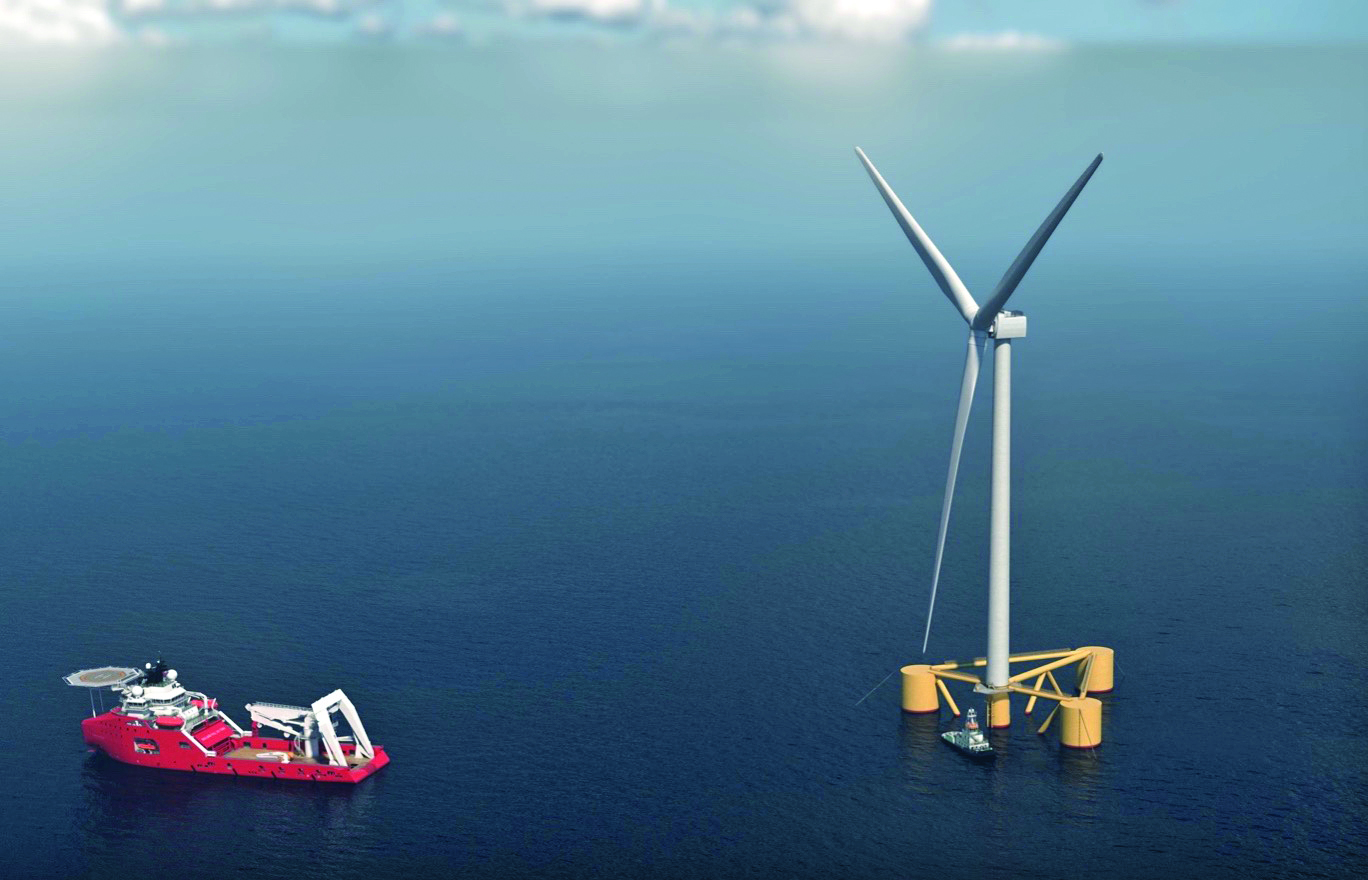
‘Poster child’
And although Cerulean Winds has concentrated its efforts mostly in the U.K., mainly because it has progressed the furthest in the market, it offers entry points for others, according to Jackson.
“The regulators are using Cerulean as a poster child, if you like, for what’s possible,” he said. “They’re certainly using our schemes as ways of bringing the regulators together. In the U.S. and other fast developing markets, it’s the same as there are many different stakeholders in the regulatory framework. And floating wind is something that crosses many different regulators. There is no floating wind regulator in the U.K., nor is there any dedicated floating wind regulator anywhere in the world. It crosses a number of maritime regulators and maritime rules and specifications and regulations. And it crosses, obviously, the renewable sector as well as marine planning, and many other departments within the civil service and the government.”
And what the U.K is doing, in common with other governments, is trying to get those different regulators to work together for the development of floating wind, according to Jackson.
“It’s no different in places like California,” he said. “It’s not the same as saying this is just another wind farm. It’s a floating structure. There are a whole bunch of things that are very different. And one of the things we’re very proud of is the fact that the Cerulean proposition is being used as a test case over here to help pull regulators together.”
That will help maneuver Cerulean Winds into a market-leader position in the floating wind space, according to Jackson.
“I think floating wind is a massive opportunity for wind,” he said. “Offshore wind is fast maturing. It became economically viable and now it’s economically robust, and everybody with a coastline wants offshore wind for all those reasons. Floating wind is the best part of offshore wind because it’s further offshore, more stable, capitalizes on bigger winds and has more flexibility on water depth. Floating wind is going to be a big part of the offshore wind industry, and the offshore wind industry has really only just started.”
















